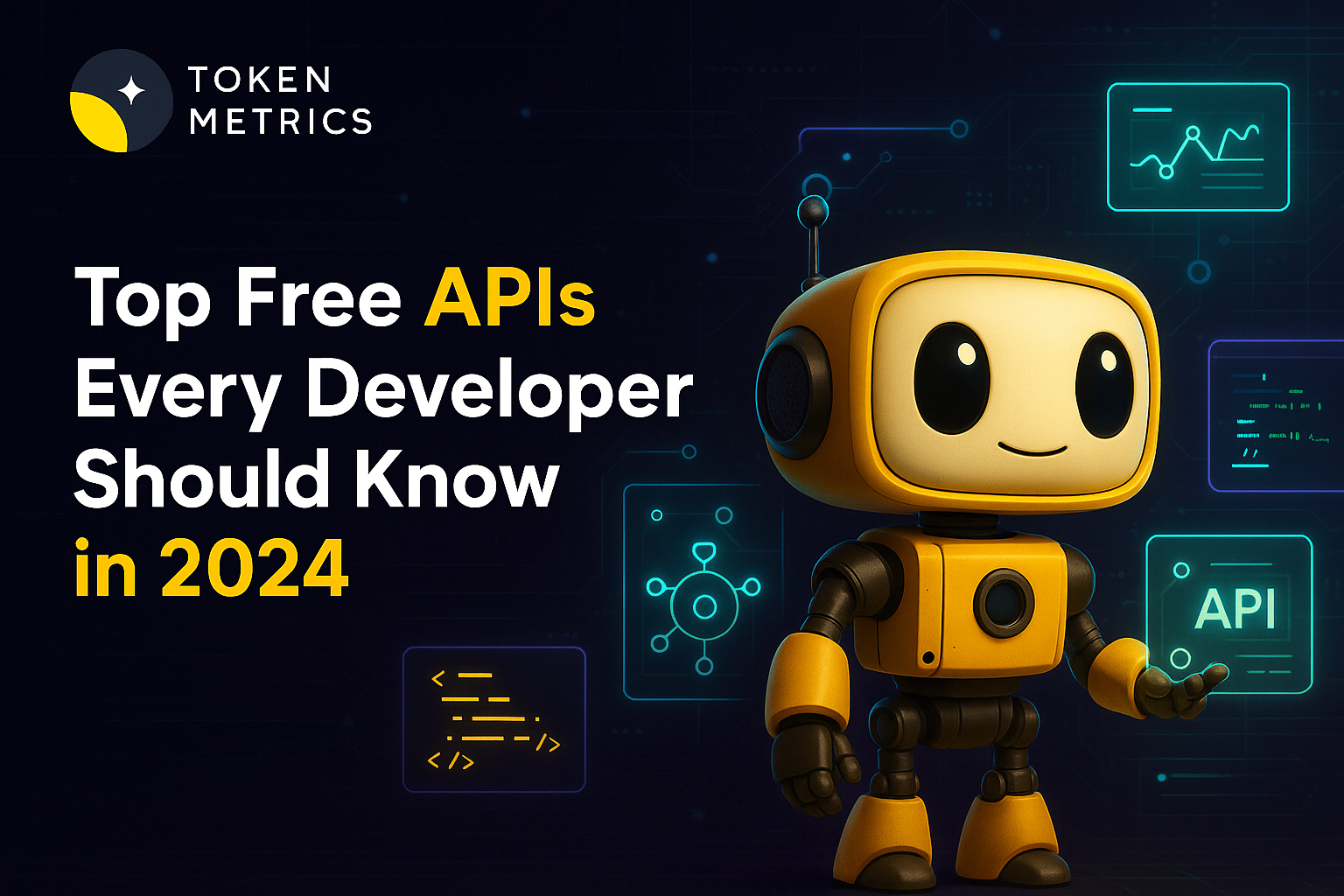Crypto Ecosystem: Understanding the Building Blocks of Digital Assets in 2025
.png)
Introduction: What Is the Crypto Ecosystem?
The crypto ecosystem refers to the interconnected network of technologies, platforms, and participants that make up the cryptocurrency space. It’s more than just Bitcoin and altcoins — it includes blockchains, decentralized applications, exchanges, wallets, staking systems, analytics platforms, and communities.
In 2025, the crypto ecosystem has matured significantly, with billions in institutional capital, AI‑driven analytics, and real‑world applications shaping its growth. Understanding this ecosystem is crucial for navigating opportunities and risks in the digital asset space.
The Core Components of the Crypto Ecosystem
- Blockchains:
The foundation of the ecosystem. Public blockchains like Bitcoin and Ethereum support transactions and decentralized applications. - Cryptocurrencies:
Digital assets like Bitcoin (BTC), Ether (ETH), and Token Metrics AI (TMAI) serve as mediums of exchange, investments, or utility tokens within blockchain networks. - Decentralized Finance (DeFi):
DeFi platforms enable lending, borrowing, staking, and yield farming without intermediaries. Examples include Uniswap, Aave, and MakerDAO. - Non‑Fungible Tokens (NFTs):
Digital collectibles and assets tied to unique identifiers, powering art, gaming, and virtual real estate economies. - Layer 2 Solutions:
Scalability technologies like Polygon and Arbitrum make blockchains faster and cheaper to use. - AI & Analytics Platforms:
Tools like Token Metrics leverage AI to analyze on‑chain data, provide coin ratings, and optimize portfolios for investors. - Exchanges & Wallets:
Exchanges and Trading Platforms (Token Metrics, Coinbase, Binance) and decentralized exchanges (Uniswap, SushiSwap) connect buyers and sellers, while wallets (MetaMask, Ledger) store assets.
How the Crypto Ecosystem Works Together
Each component interacts to create a self‑sustaining digital economy:
- Blockchains provide the base layer for security and transactions.
- DeFi protocols unlock financial services without traditional banks.
- AI analytics like Token Metrics guide investors toward smarter decisions.
- Communities and DAOs (decentralized autonomous organizations) shape project development and governance.
This interconnectedness is why understanding the ecosystem holistically is vital for long‑term success in crypto.
The Role of AI in the Modern Crypto Ecosystem
Artificial intelligence is transforming how investors engage with crypto. Platforms like Token Metrics offer:

- AI‑Generated Coin Ratings: Evaluating tokens across fundamentals, technicals, and market sentiment.
- Narrative Detection: Spotting emerging trends like AI coins, DeFi, and real‑world asset tokenization.
- Portfolio Optimization: Helping users allocate capital efficiently across assets.
- Trading Signals: Delivering data‑driven entry and exit points for assets.
In 2025, AI is no longer optional — it’s an essential tool for surviving the complexity of the crypto market.
Key Trends in the 2025 Crypto Ecosystem
- Institutional Adoption:
Large financial institutions now hold crypto and offer crypto‑backed products like ETFs. - Real‑World Asset Tokenization (RWA):
Projects tokenize real estate, commodities, and equities, bridging traditional finance with blockchain. - Layer 2 Expansion:
Ethereum’s growth is supercharged by Layer 2 solutions that cut fees and speed up transactions. - AI‑Driven Investing:
Investors use AI platforms like Token Metrics for real‑time analytics and smarter trading strategies. - Regulatory Clarity:
More countries are implementing clear frameworks for crypto, encouraging responsible growth.
Opportunities in the Crypto Ecosystem

For investors, the ecosystem offers multiple revenue streams:
- Trading & Investing: Holding and trading cryptocurrencies.
- Staking & Yield Farming: Earning passive income via Proof of Stake networks or DeFi pools.
- NFT Markets: Exploring digital art, collectibles, and in‑game assets.
- Participating in DAOs: Voting on governance decisions for projects you believe in.
Risks in the Crypto Ecosystem
Despite its growth, the crypto ecosystem still carries risks:
- Volatility: Price swings remain a challenge for investors.
- Security Threats: Hacks, phishing, and smart contract vulnerabilities persist.
- Regulatory Uncertainty: Governments continue to refine crypto rules.
- Market Speculation: Some sectors, especially meme coins, remain driven by hype rather than fundamentals.
Platforms like Token Metrics mitigate these risks by providing real‑time insights, ratings, and AI‑powered alerts.

Practical Tips for Navigating the Ecosystem
- Start with Education: Understand how blockchains, tokens, and DeFi work.
- Diversify: Spread investments across sectors (e.g., BTC, ETH, DeFi, AI coins like TMAI).
- Use Analytics: Leverage Token Metrics for smarter portfolio management and early narrative detection.
- Stay Secure: Use hardware wallets and enable two‑factor authentication.
The Future of the Crypto Ecosystem
By 2025, the crypto ecosystem has shifted from speculation to utility‑driven growth. With AI integration, institutional adoption, and real‑world use cases, crypto is evolving into a mainstream part of global finance.
Projects like Token Metrics are leading the charge by making advanced analytics accessible to everyday investors, ensuring they can thrive in this rapidly evolving environment.
Conclusion
The crypto ecosystem in 2025 is a dynamic, interconnected web of technologies, platforms, and communities. To succeed, investors must understand its components and use the right tools to navigate it.
By combining education, diversification, and AI‑powered analytics from Token Metrics, you can confidently explore the ecosystem, capitalize on emerging opportunities, and mitigate risks in this transformative space.
Create Your Free Token Metrics Account

.png)




%201.svg)
%201.svg)


%201.svg)










.svg)




.png)